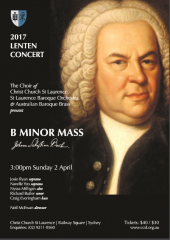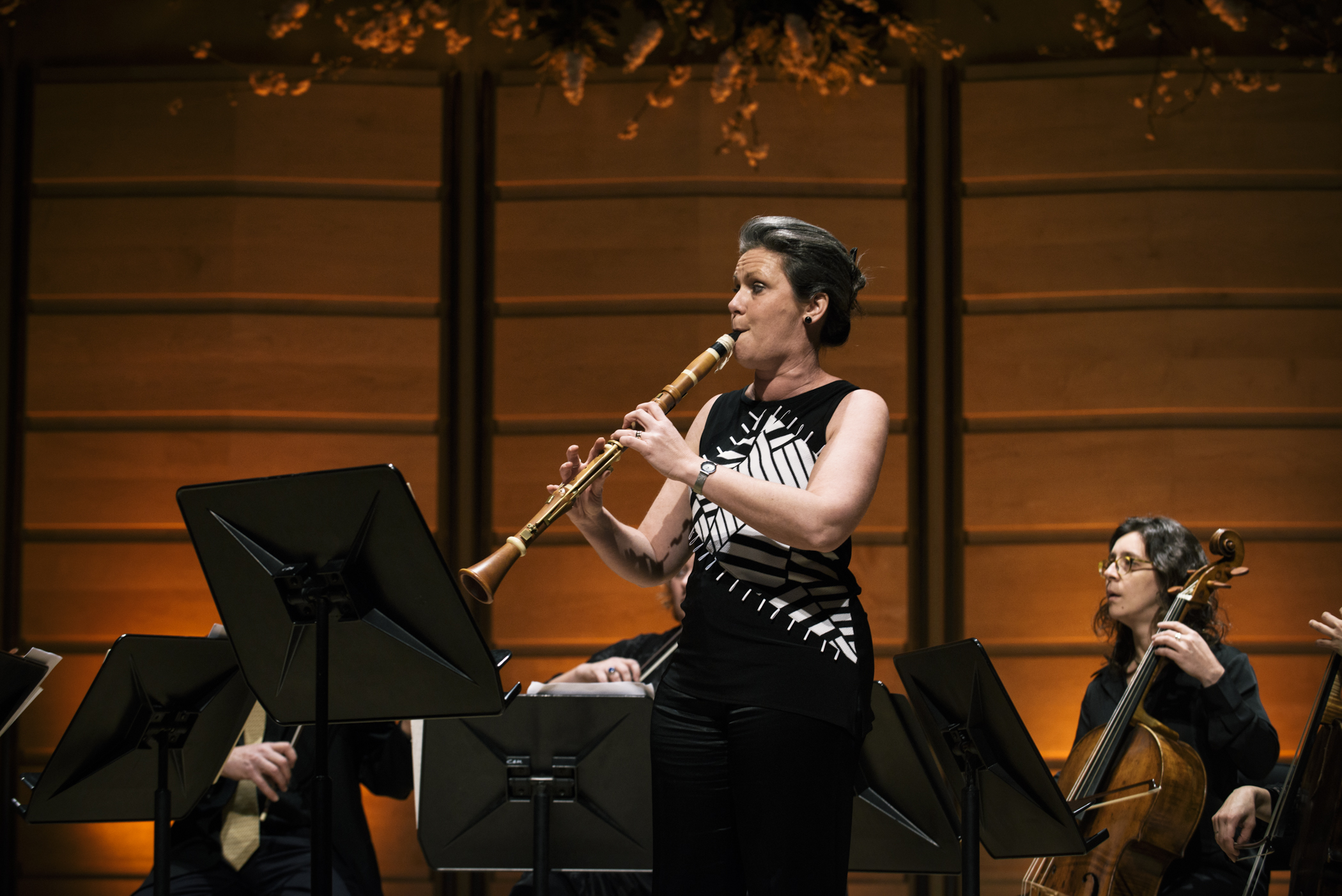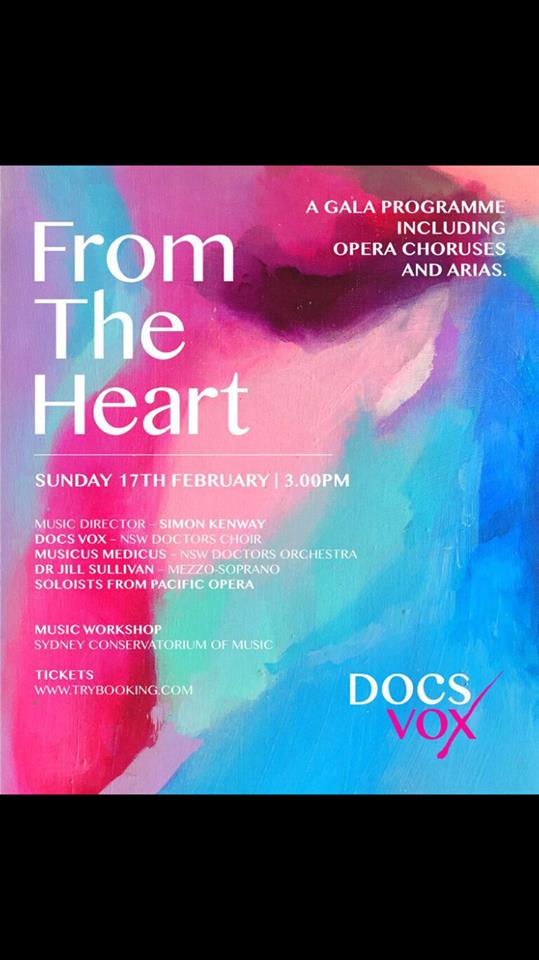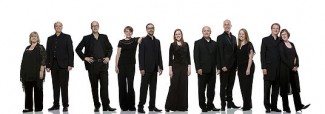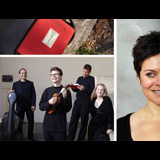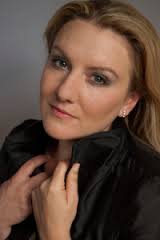Concert Review: Mass in B Minor/ Choir of Christ Church St Laurence/ St Laurence Baroque Orchestra/ Australian Baroque Brass
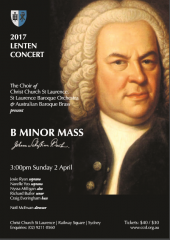
Mass in B minor, BWV 232, J S Bach
Choir of Christ Church St Laurence, St Laurence Baroque and Australian Baroque Brass
Christ Church St Laurence
April 2, 2017
Whether Sydney’s choral directors were in cahoots or whether it was coincidence, choral music fans have the rare luxury of hearing three of J S Bach’s major works this Easter.
The first of these was the Mass in B minor, BWV 232, presented by the Choir of Christ Church St Laurence and soloists with St Laurence Baroque Orchestra and Australian Baroque Brass directed by Dr Neil McEwen.
It is a magnificent work for 5 soloists, 8 choral parts and instrumental ensemble which includes transverse flute, oboe d’amore, bassoon, corno da caccia, trumpet, timpani, strings and continuo. It makes considerable demands on its performers. The history of how the Mass came to be is for another time and place. Suffice it to say that it was not written as a whole and was assembled between 1747 and 1749, the year before Bach’s death. It contains parodies of many of Bach’s other writing and despite its piecemeal character, the five sections of the mass stand together as a cornerstone of choral repertory. The Swiss publisher Hans Georg Nägeli described it in 1818 as “one of the greatest musical works of art of all times and of all peoples.”
Very little is known about its early performances – with only one known account from the 18th century, conducted by CPE Bach on April 1, 1786. The Hamburger Correspondent described JS Bach as ‘the immortal Bach’ and the Credo which was performed on that occasion as “one of the most splendid musical works that has ever been heard, but for which the vocal parts must adequately be filled if it is to achieve its full effect. Our brave singers also showed here, in particular with the Credo, their renowned skill in ensemble and performance of the most difficult points…”
The 36 choristers of Christ Church St Laurence and the 20 instrumentalists directed by Dr Neil McEwen did indeed demonstrate their ensemble and performance skills with their delivery of the layers of complex counterpoint, sustained chorales and virtuosic choruses. There were some minor irregularities in cohesion, however all in all, the attention to detail was meticulous, achieving commendable articulation, phrasing and dynamic variation – the wax and wane of fugal subjects and counter-subjects; the cantus firmus in the relentless statement of faith that is the Credo; the irresistible dance rhythms of the Gloria and the Hosanna; the sense of mystery in the descending phrases of the Et incarnatus moving to a full-blooded attacca in the explosive Et resurrexit and a sense of majesty in the rising triplets of the Sanctus against its downward sweeping octaves.
The soloists, soprano Josie Ryan, mezzo-soprano Sally-Anne Russell, alto Nyssa Milligan, tenor Richard Butler and bass Craig Everingham were well-chosen for their style, vocal quality and blend. Bach gave the higher voices very little of the limelight in this piece. Although soprano Josie Ryan, is only heard in three duets, they were beautifully sung with due deference to a sense of ensemble; tenor, Richard Butler, had to cool his heels till his all too brief but exquisitely phrased and controlled Benedictus. Russell’s Laudamus te was luxurious; Everingham has a commanding voice with an upper range that was especially luminous in this performance; Milligan still in her early 20s has a voice both rich in timbre and in promise, of which we look forward to hearing more.
The orchestra led by Stan W Kornel provided a rich and stylised instrumental context with especially fine work from Sydney Symphony horn player Robert Johnson, trumpeter John Foster and the oboe section.
JS Bach’s Mass in B minor is an extraordinary piece and it was a pleasure to hear it performed so well in the tranquil and intimate liturgical surrounds of Christ Church St Laurence.
Shamistha de Soysa for SoundsLikeSydney©

